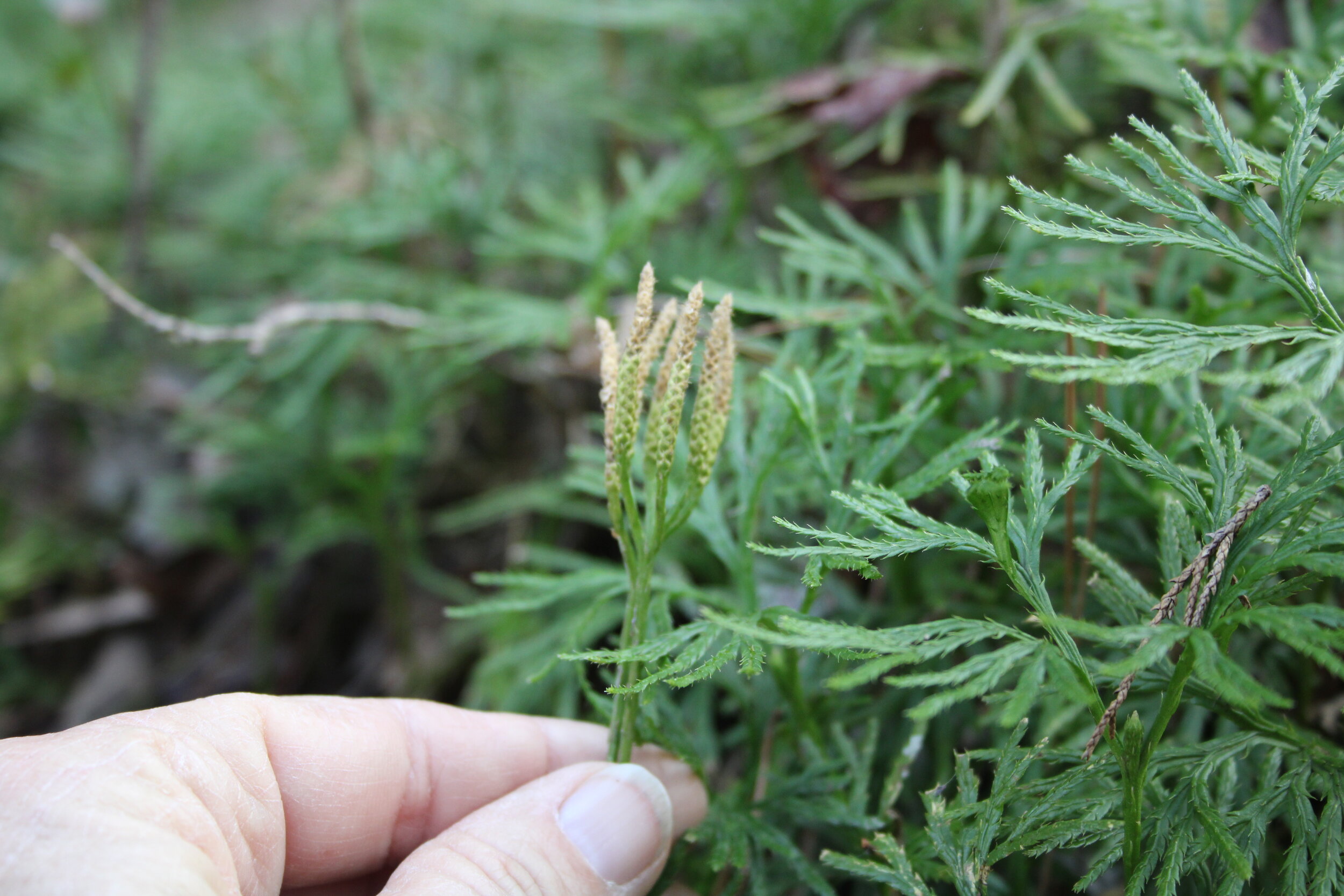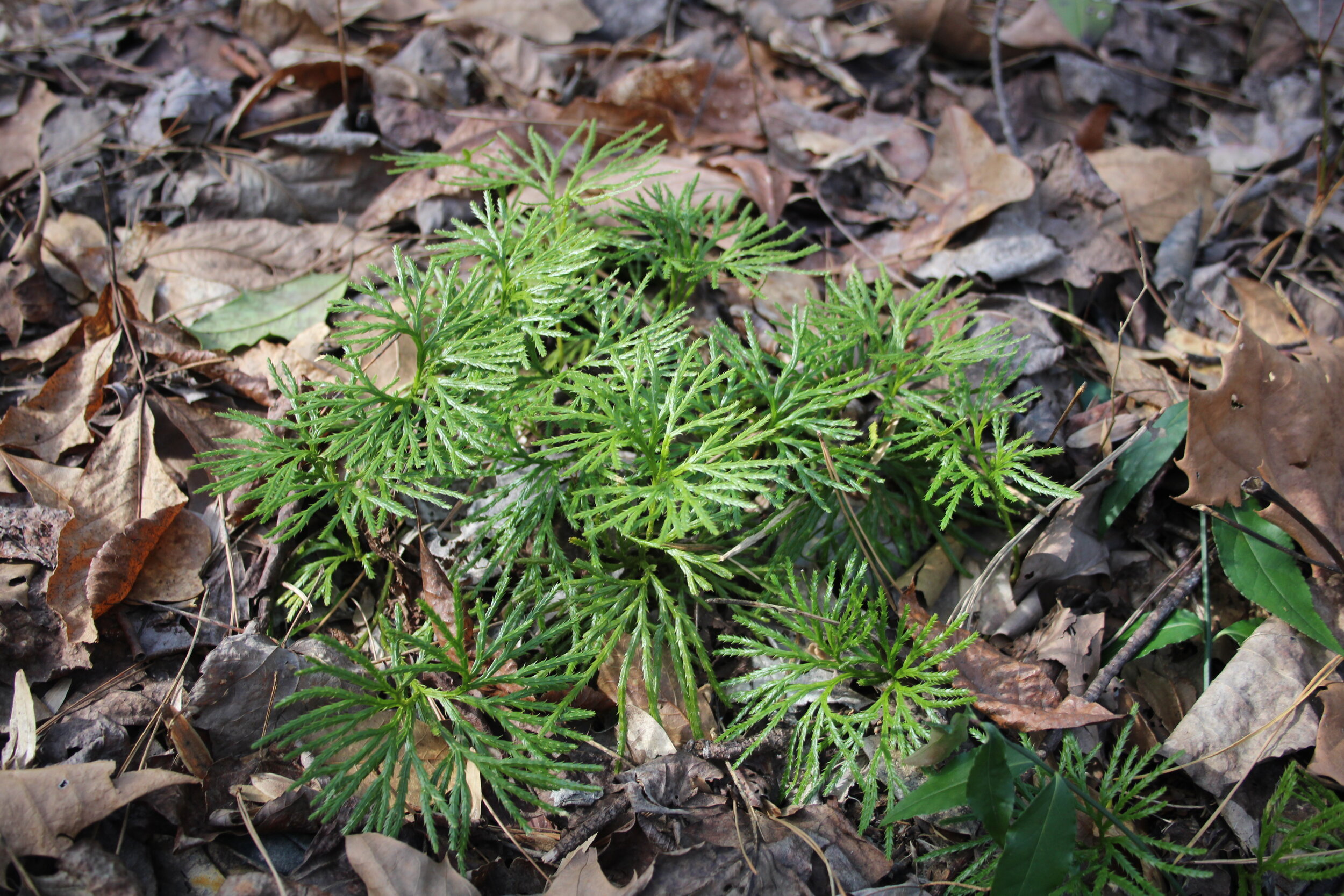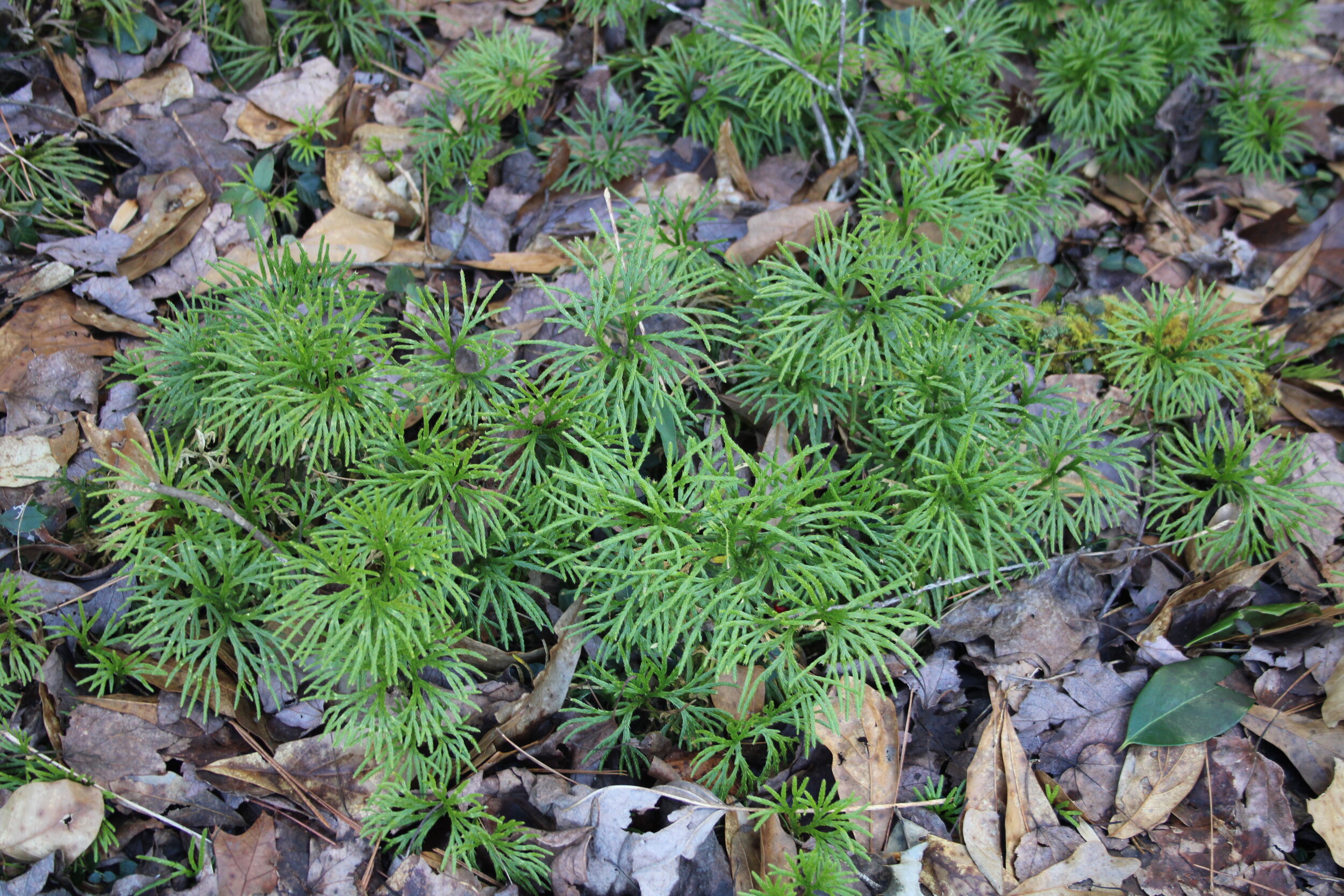The bright green foliage of club moss is a welcome sight against the grays, browns and blahs of winter. Lycopodium, also known as creeping cedar or ground pine, grows in partial shade throughout woodland areas in the Mary Snoddy garden. Reaching a height of six inches or less, it makes a beautiful green groundcover blanket. Evergreen plants spread above ground by runners and below ground by shallow rhizomes with sparse roots.
Like ferns, Lycopodiums produce new plants by spores. The spores occur along candelabra-type stems (see photos) that are held above the lacy foliage. These spores, when dried and mixed with air to form a mist, are flammable. They are used to create impressive flashes or flames in stage productions. The flames disappear so quickly that they don’t (normally) ignite anything else.
The one downside of creeping cedar is the difficulty in transplanting it. Several times, I have attempted a move and met with miserable failure. I suspect that it may need a particular mycorrhiza (soil fungi) or some magic combination of micronutrients. When happy in their habitat, plants spread and spread. They prefer partial shade and well-drained acidic soil but will tolerate almost any soil type . They are slow to return to areas that have burned. Decades ago, club moss was so widely harvested for Christmas wreaths that it neared extinction.
I found conflicting reports of growth zones. Clubmosses have been separated into at least ten genus and 300 or more species, so there may be wide variations through the family. I can only report success in zone 7b. The lovely “leaves” look like shredded umbrellas. Neither deer nor rabbits nibble.



